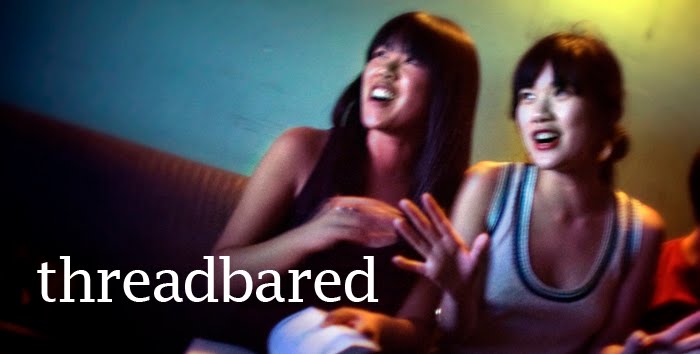
Lucky for those of you in Jersey! On July 1, the Newark Museum will present a major site-specific installation by the acclaimed British artist Yinka Shonibare MBE called Party Time: Re-Imagine America to commemorate the museum's centennial. From Allison McCartney for the Newark Museum:
For the Newark Museum commission, Shonibare chose as his setting the mahogany-paneled dining room of the Ballantine House, built in 1885 for the prominent Newark brewing family, Jeannette and John Holme Ballantine, and part of the Newark Museum's campus since 1937. In this opulent interior, the artist has staged an imagined scene of a late 19th century dinner party midway through a multi-course feast.
Eight headless figures, dressed in period costume made from the artist's signature "Dutch wax" fabric, are seated around an elaborately set table as a servant appears bearing the main course, a large peacock served on a silver platter. The animated body language of the guests suggests a moment in which proper Victorian etiquette has begun to disintegrate, as an indulgent celebration of prosperity tips towards misbehavior and even debauchery. The scene references the rise of wealth and quest for refinement that accompanied industrialization in the United States, where the elaborate dinner party replaced the bare-minimum meal, becoming a celebratory "eating fest" for the social and economic ruling class.
Party Time is one of the Shonibare's most important works to date, reflecting the culmination of major themes that the artist has explored in his work for over a decade," observes Christa Clarke, the curator of Party Time and the Museum's Curator of the Arts of Africa and Senior Curator of the Arts of Africa and the Americas. "At its core, the installation considers the discrepancies of wealth generated by late-nineteenth-century enterprise, in which the material excesses and self-indulgence of a privileged few were made possible by the labor of others. His references to the increasingly uneven distribution of wealth in late 19th century America seem particularly relevant at this moment in time in the wake of our current economic collapse as a result of out-of-control spending."
For those who are interested, on June 30, curator Christa Clarke will engage Shonibare in a dialogue about the artistic process in developing Party Time and how this major sculptural installation relates to his larger body of work. The 7 pm discussion will be preceded by a reception in the Museum's Engelhard Court beginning at 6 pm, during which you will be able to preview the installation. The event is free and pre-registration is required.
While best experienced in person -- it's difficult to otherwise replicate the sensation of being drawn into the sensuous richness of his bright fabrics, while being distracted by the headless mannequins' arrested gestures of promised violence-- his tableaus presenting the perversions of colonialism are gorgeous and disturbing in any medium. For additional reading and viewing of his works, check out a great overview of Shonibare's 2008 exhibition at the James Cohan Gallery (NYC) called The Age of Reason, as well as his 2005 interview with BOMB Magazine. You can also watch and/or listen to him talk about his work at the Tate in 2004, and hell, read this just-published essay about him at TIME.

From the installation Gallantry and Criminal Conversation, 2002













